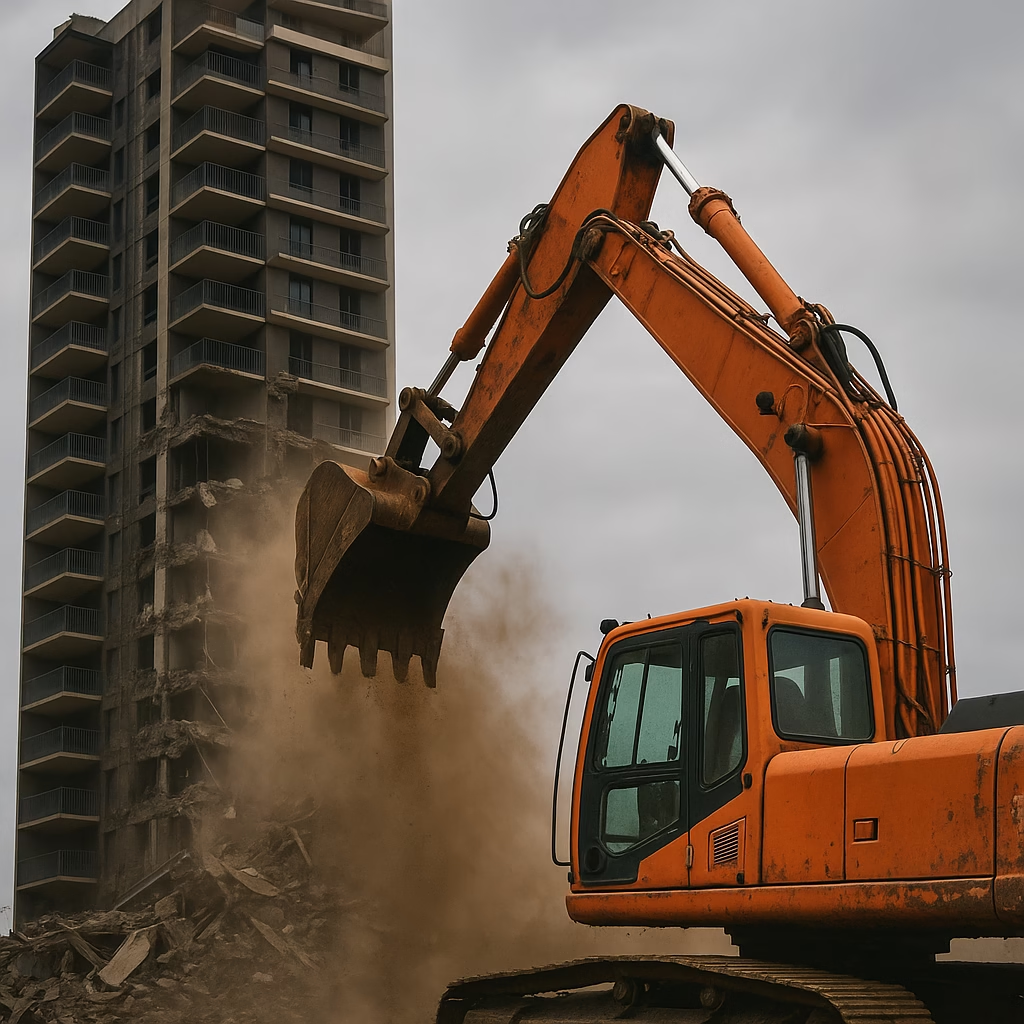
Supreme Court Upholds Bombay High Court’s Order to Vacate Illegal Floors of Wellington Heights in Tardeo, Mumbai
In a significant judgment reinforcing the rule of law in urban development, the Supreme Court of India has upheld the Bombay High Court’s direction ordering the vacation and demolition of 18 illegally constructed floors of the Wellington Heights building in Tardeo, Mumbai.
Background
Wellington Heights, a high-rise residential tower located in the upscale Tardeo area of south Mumbai, has been under legal scrutiny for allegedly flouting building regulations and development control norms. The original plan sanctioned by the municipal authorities permitted only a limited number of floors. However, over time, the developers were found to have constructed 18 additional floors without due approvals, violating the sanctioned plans.
Local activists and residents had approached the Bombay High Court, challenging the legality of the construction. After examining municipal records and hearing both parties, the High Court ruled in favor of the petitioners in 2022 and directed the residents to vacate the illegally constructed floors so that demolition could be carried out.
Supreme Court’s Ruling
The developers and occupants appealed against the High Court’s order to the Supreme Court, seeking relief from eviction and demolition. However, the apex court dismissed the appeal, observing that:
- The construction beyond the sanctioned plans was undeniably unauthorized;
- Allowing such structures to stand would set a dangerous precedent and encourage brazen violations of urban planning laws;
- Public interest and orderly development of cities must prevail over private commercial gains.
The Supreme Court also stated that buyers who invested in the illegal floors cannot claim protection in equity when the construction itself was in violation of law.
Key Implications
- Immediate Vacation: Occupants of the illegal 18 floors must vacate their premises within the timeframe stipulated by the High Court.
- Demolition to Follow: Municipal authorities, along with appointed agencies, are now expected to proceed with demolition of the illegal floors.
- Accountability of Developers: The court urged the Maharashtra government and Brihanmumbai Municipal Corporation (BMC) to initiate prosecution and recovery proceedings against the developers responsible for the unauthorized construction.
- Precedent for Future Cases: This order sends a stern message to builders and officials that violations of building norms will not be tolerated and that courts will enforce demolition even at advanced stages of construction.
Response from Stakeholders
While residents expressed disappointment and concern over losing their homes despite being bona fide purchasers, legal experts note that homebuyers must conduct thorough diligence before purchasing properties. Civic activists have welcomed the judgment as a victory against illegal construction and urban corruption.
Conclusion
The Supreme Court’s decision to uphold the Bombay High Court’s vacation order in the Wellington Heights case marks a pivotal moment in the enforcement of urban planning laws in India. It underscores the judiciary’s zero-tolerance approach toward unauthorized construction and is expected to deter future violations by developers.
1. OC is proof that the building is legal and safe
An Occupancy Certificate is issued only after the municipal authorities verify that the building has:
- Been constructed as per the sanctioned plan
- Followed all building codes, fire safety norms and environmental standards
- Has necessary services like water connection, drainage, electricity, fire exits, etc.
Without an OC, you cannot be sure that the building is structurally sound or compliant with critical safety norms.
2. Risk of demolition or eviction
As seen in cases like Wellington Heights in Tardeo, buildings without OC often have unauthorised floors or illegal deviations. Courts have consistently ordered such floors/structures to be vacated and even demolished. That means:
- You can be forced to leave your flat with no compensation.
- You may lose both your home and investment, despite being an “innocent purchaser”.
3. No legal possession — so you can’t sell easily
Without an OC:
- The legal ownership/title of your flat itself is questionable.
- Banks are reluctant to give buyers home loans, which shrinks your pool of future buyers.
- Even if you find a buyer, transferring the flat can be a legal nightmare.
4. No access to basic utilities
In many cities, municipalities will not provide permanent water and electricity connections to buildings without OC. You may be forced to depend on:
- Water tankers (costly and irregular)
- Temporary electricity connections
- No property tax records in your name
5. Difficult to get insurance or bank loans
Insurance companies often refuse to insure properties without legal approvals. Banks either reject loan requests outright or charge higher interest. So both buying and reselling the flat becomes difficult.
6. You have no legal protection
If you buy into an illegal building:
- You cannot claim ignorance of law.
- Courts treat you as a “consequence of your own risk”.
- You cannot demand regularisation or legal relief if the building gets into trouble with authorities.
✅ Bottom line: Never buy a flat in a building without an Occupancy Certificate.
It may look like a shortcut to owning a dream home, but in reality it’s a legal hazard. Always insist on:
- Completion Certificate (CC)
- Occupancy Certificate (OC)
- Approved building plans
Even if it means waiting longer or paying more, buying a legal, fully approved property is the only safe investment — anything else is gambling with your future.
Would you like a checklist of documents every property buyer should verify before purchasing a flat?
